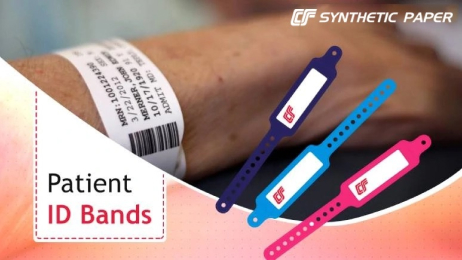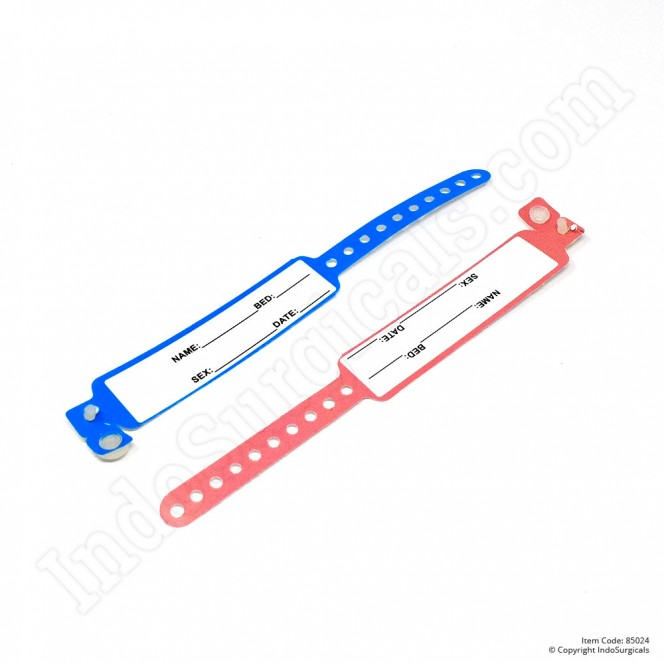Understanding the Advanced Advancements Behind the Patient Identification Band
Understanding the Advanced Advancements Behind the Patient Identification Band
Blog Article
Checking Out the Different Sorts Of Patient Identification Band Utilized in Clinical Facilities
In the detailed globe of medical care, the essential function of Patient Identification bands frequently goes unnoticed. These bands, varying from easy paper wristbands to innovative RFID bands, develop the backbone of Patient safety methods, making sure precision in Patient Identification. Yet, the huge diversity of these bands, each with its one-of-a-kind benefits and restrictions, is frequently forgotten. As we navigate with this subject, one may get insight into the subtle intricacies and important value of such bands in clinical facilities.
Recognizing the Importance of Patient Identification Bands
While they might appear like simple devices, Patient Identification bands play an important function in clinical centers. These bands act as an important device for confirming Patient identification, protecting against medical errors associated to misidentification. The bands typically display crucial information such as the Patient's name, age, blood group, and any type of well-known allergic reactions. They allow healthcare experts to swiftly access this essential details, thereby helping with precise and timely clinical therapy. Patient Identification bands additionally help in simplifying management jobs, ensuring accurate record-keeping and billing. In spite of their simplicity, these bands symbolize the principle of Patient safety, a cornerstone of high quality health care. Without them, the danger of medical errors, and subsequently, Patient injury, might substantially enhance.
Standard Paper Wristbands: Their Use and Limitations
Standard paper wristbands have been a staple in Patient Identification throughout different clinical centers. While their usage is extensive, they nurture specific limitations that might affect their effectiveness in Patient management. This area will concentrate on the range of their application and the fundamental downsides related to their use.
Paper Wristbands: Use Scope
In the world of Patient Identification, paper wristbands have long held an essential duty. These bands are usually used in outpatient setups, where the Patient's remain is temporary. The wristbands consist of important details such as the Patient's name, day of birth, and an one-of-a-kind Identification number. This simple, yet reliable system, allows clinical experts to quickly and precisely determine clients, guaranteeing the appropriate treatment is provided. Paper wristbands are also used in emergency situation scenarios, where fast Identification is vital. Their use reaches events like blood contribution drives and mass vaccination programs, further highlighting their flexibility. Despite advancements in modern technology, the simple paper wristband remains a cost-effective and reliable option for Patient Identification in various health care situations.
Limitations of Paper Wristbands
Despite their extensive use, paper wristbands are not without their downsides. Their physical resilience is among the considerable limitations. Exposure to water, sweat, or misuse can provide them unreadable or even trigger them to break down. In enhancement, paper wristbands usually lack the technological abilities of even more contemporary alternatives, such as barcoding or RFID chips, limiting their capability to simply showing created information. The inability to upgrade or modify the data on the wristband is one more drawback. Moreover, if the info is transcribed, clarity can be jeopardized, leading to potential misidentification. Ultimately, paper wristbands can create discomfort or skin irritation to some clients, particularly when put on for extensive periods.
Barcoded Wristbands: Innovations in Patient Identification
While Patient Identification has actually long been an important aspect of health care, the development of barcoded wristbands represents a considerable leap onward. These bands utilize the simpleness of barcoding innovation, enabling for Patient information to be quickly scanned and accessed. They boost the rate and precision of Patient Identification, reducing the risk of clinical mistakes associated to misidentification.
Superhigh Frequency Identification (RFID) Bands: a Step Towards Futuristic Healthcare
The evolution of Patient Identification bands has actually caused the appearance of Radio Regularity Identification (RFID) Bands (patient identification band). These ingenious devices present key benefits for health care centers, using a much more effective and technically progressed methods of Patient Identification. The implementation of RFID in medical care is a substantial action in the direction of an extra advanced technique to Patient monitoring and safety
Understanding RFID Bands

RFID Bands: Trick Benefits
Welcoming a future where modern technology and health care combine, superhigh frequency Identification bands provide numerous crucial benefits. Largely, these bands improve Patient security by supplying precise, immediate Identification, thereby lowering clinical mistakes. RFID bands can save a huge amount of Patient information, including case history and allergies, making it possible for customized care. They additionally enhance administrative jobs, as the automated data access replaces manual procedures, enhancing efficiency and lowering documentation. In addition, RFID bands supply real-time monitoring of people, important in high-risk environments such as surgical procedure or intensive care. These bands are long lasting and resistant to environmental variables, making certain regular performance. In general, RFID bands represent a considerable improvement in Patient Identification innovation, profiting both individuals and doctor.
Executing RFID in Healthcare
As we enter a technologically sophisticated era, my explanation the execution of RFID bands in health care comes to be progressively essential. These bands give a seamless method to track and determine individuals, ensuring their security and improving performance in therapy procedures. RFID bands supply various benefits over conventional Identification methods. They can save a large amount of information, consisting of the Patient's case history and treatment strategies, which can be easily accessed by doctor. This information aids physicians make notified choices regarding the Patient's treatment strategy. RFID bands decrease medical mistakes by offering exact Patient Identification, which is vital in avoiding misdiagnosis or incorrect medication administration. Therefore, the implementation of RFID bands is a significant action towards boosting Patient safety and security and health care distribution.

Color-Coded Wristbands: Assisting in Quick and Accurate Medical Diagnosis
In the busy environment of a medical center, color-coded wristbands have actually emerged as vital devices for swift and specific Identification of a client's clinical problem. These wristbands, used by patients, lug details shades that represent various clinical conditions or standings. Red can suggest allergy risks, while yellow might signify a fall risk. This system is designed to provide instant visual hints to medical care service providers, improving Patient safety and security and care high quality. In emergency situations, making use of these wristbands allows for rapid decision-making. The effectiveness of color-coded wristbands depends on the harmony of shade interpretation across healthcare institutions, calling for typical criteria for constant application.
Methods for Efficient Application and Management of Patient ID Bands
Attaining optimal use of Patient Identification bands requires a well-structured method for their application and management. Patient education is likewise critical; individuals should understand the purpose of the bands and the demand for their continuous wear. It's crucial to have a backup plan in place, such as barcode scanning or biometrics, to guarantee that Patient Identification is never ever jeopardized.
Final thought
Patient Identification bands are vital in medical facilities to guarantee safety and precision. Conventional paper, barcoded, RFID, and color-coded wristbands each hold special advantages, varying from cost-effectiveness to innovative information storage space and instantaneous medical notifies. Effective application and monitoring of these bands can considerably minimize clinical errors, increase performance, and boost total Patient treatment. Therefore, understanding and making use of these Identification devices is extremely important for keeping high requirements in health care.
These bands, varying from basic paper wristbands to advanced RFID bands, form the foundation of Patient security procedures, ensuring accuracy in Patient Identification.The development of Patient Identification bands has brought about the emergence of Radio Frequency Identification (RFID) Bands. Generally, RFID bands stand for a substantial improvement in Patient Identification innovation, profiting both individuals and health care carriers.
RFID bands reduce medical mistakes by giving exact Patient Identification, which is essential in avoiding misdiagnosis or wrong medicine management. Patient education is also crucial; people have to comprehend anonymous the function of the bands and the need for their consistent wear.
Report this page